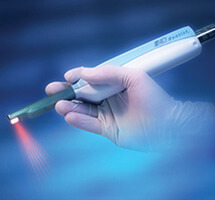Same Day Restorations with E4D in Grandview
Traditional dental crowns, bridges, and other restorations required patients to visit our office at least two times, and could take several weeks or even months to complete. We also had to place and remove temporary restorations as part of the traditional restoration process, and this could lead to unnecessary dental damage. In order to continue to improve the dental experience for our Grandview, Powell, and Dublin, OH patients, we’re happy to offer same day dental restorations using the E4D system. No dental restoration is right for every patient, but if you’re interested in finding out more about one-visit crowns, E4D technology, or would like to schedule an appointment, contact our knowledgeable team today.
 How Does E4D Work?
How Does E4D Work?
Like traditional dental crowns and bridges, E4D dental restorations require us to prepare patients’ teeth, capture bite impressions, craft a custom restoration, and attach the final product. Unlike traditional crowns, the E4D system makes it possible for our team to complete the entire process in just one appointment. We start by numbing patients’ mouths, removing damaged dental structures, and otherwise preparing teeth for the restoration. Then, we capture bite impressions through our E4D computer assisted design and manufacture (CAD/CAM) system. This system allows us to electronically capture precise bite impressions. We can then use the specialized E4D software to design a custom restoration. The designs are then sent to our in-office milling unit where a block of high-quality porcelain is milled to meet our design specifications. Once the restoration is completed, we cement it into position on the prepared tooth. The entire process typically takes a few hours, but patients still save a significant amount of time compared with the traditional two-visit restoration process. Additionally, patients don’t need to undergo the placement and removal of a temporary restoration, which can cause additional damage.
